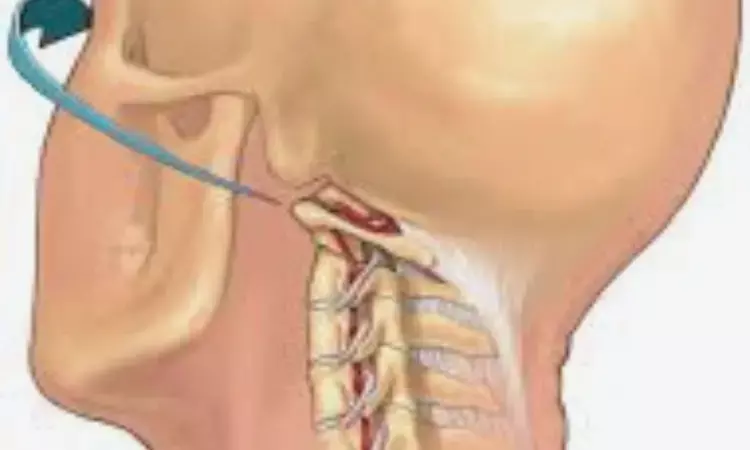- Home
- Medical news & Guidelines
- Anesthesiology
- Cardiology and CTVS
- Critical Care
- Dentistry
- Dermatology
- Diabetes and Endocrinology
- ENT
- Gastroenterology
- Medicine
- Nephrology
- Neurology
- Obstretics-Gynaecology
- Oncology
- Ophthalmology
- Orthopaedics
- Pediatrics-Neonatology
- Psychiatry
- Pulmonology
- Radiology
- Surgery
- Urology
- Laboratory Medicine
- Diet
- Nursing
- Paramedical
- Physiotherapy
- Health news
- Fact Check
- Bone Health Fact Check
- Brain Health Fact Check
- Cancer Related Fact Check
- Child Care Fact Check
- Dental and oral health fact check
- Diabetes and metabolic health fact check
- Diet and Nutrition Fact Check
- Eye and ENT Care Fact Check
- Fitness fact check
- Gut health fact check
- Heart health fact check
- Kidney health fact check
- Medical education fact check
- Men's health fact check
- Respiratory fact check
- Skin and hair care fact check
- Vaccine and Immunization fact check
- Women's health fact check
- AYUSH
- State News
- Andaman and Nicobar Islands
- Andhra Pradesh
- Arunachal Pradesh
- Assam
- Bihar
- Chandigarh
- Chattisgarh
- Dadra and Nagar Haveli
- Daman and Diu
- Delhi
- Goa
- Gujarat
- Haryana
- Himachal Pradesh
- Jammu & Kashmir
- Jharkhand
- Karnataka
- Kerala
- Ladakh
- Lakshadweep
- Madhya Pradesh
- Maharashtra
- Manipur
- Meghalaya
- Mizoram
- Nagaland
- Odisha
- Puducherry
- Punjab
- Rajasthan
- Sikkim
- Tamil Nadu
- Telangana
- Tripura
- Uttar Pradesh
- Uttrakhand
- West Bengal
- Medical Education
- Industry
Fibromuscular Dysplasia Linked to Higher Recurrence Risk in Spontaneous Cervical Artery Dissection Patients: JAMA

France: A new cohort study has found that fibromuscular dysplasia (FMD) is associated with unique clinical features and a higher recurrence rate of spontaneous cervical artery dissection (SCEAD), aiding in better patient identification and counseling.
The study, published in JAMA Network Open by Ahmad Nehme and colleagues from the Department of Neurology, Université Caen-Normandie, CHU de Caen-Normandie, France, explored how the presence of FMD influences the clinical characteristics and recurrence risk of SCEAD. The findings highlight that individuals with FMD represent a distinct subgroup within the SCEAD population, with unique radiological features and a higher likelihood of experiencing recurrent arterial dissection.
Fibromuscular dysplasia is a non-inflammatory, non-atherosclerotic vascular condition that leads to abnormal arterial wall development and can predispose individuals to vascular complications such as dissection and aneurysm formation. While FMD is detected in 6% to 14% of patients with SCEAD, its exact role in disease recurrence has remained unclear.
To address this, researchers analyzed data from the Stroke Prevention in Cervical Artery Dissection (STOP-CAD) retrospective cohort, which included 3,714 adults diagnosed with SCEAD across 63 centers in 16 countries between 2015 and 2022. The study compared patients with and without FMD to assess differences in demographics, clinical presentation, imaging findings, and recurrence rates over 24 months.
The study led to the following findings:
- Among the study population, 196 patients (5.3%) had fibromuscular dysplasia.
- Patients with FMD were generally older and predominantly female compared with those without FMD.
- They more often had a history of dissections in arteries other than the cervical arteries, previous SCEAD, recent upper respiratory tract infection, cerebral aneurysm, or migraines.
- Imaging findings showed that FMD patients were less likely to have a single vertebral artery dissection or an occlusive dissection, suggesting distinct radiological characteristics.
- During follow-up, 81 participants experienced recurrent SCEAD, with more than half of these cases occurring within the first three months.
- The 24-month recurrence rate was 7.7% in patients with FMD versus 2.8% in those without FMD.
- This reflects a 2.75-fold higher risk of recurrence among patients with FMD.
The researchers emphasized that recognizing FMD in patients with SCEAD is critical for risk stratification and clinical management. Identifying FMD-related markers—such as migraine history, previous dissections, or associated aneurysms—may help clinicians tailor follow-up strategies and patient counseling.
However, the authors acknowledged certain limitations. The original STOP-CAD study was not specifically designed to investigate FMD, and data on some variables, such as detailed imaging protocols, vascular distribution, and family history, were unavailable. Moreover, the study focused on short- to medium-term outcomes, and longer follow-up data are needed to fully understand the long-term recurrence risk.
"The large, international cohort study reinforces that FMD is an important risk factor for recurrent spontaneous cervical artery dissection. The findings suggest that FMD should be actively considered in patients with cervical artery dissection—particularly those with suggestive clinical or imaging features—to improve diagnosis, monitoring, and long-term management," the authors concluded.
Reference:
Nehme A, Shu L, Boulanger M, et al. Fibromuscular Dysplasia and Spontaneous Cervical Artery Dissection. JAMA Netw Open. 2025;8(11):e2540800. doi:10.1001/jamanetworkopen.2025.40800
Dr Kamal Kant Kohli-MBBS, DTCD- a chest specialist with more than 30 years of practice and a flair for writing clinical articles, Dr Kamal Kant Kohli joined Medical Dialogues as a Chief Editor of Medical News. Besides writing articles, as an editor, he proofreads and verifies all the medical content published on Medical Dialogues including those coming from journals, studies,medical conferences,guidelines etc. Email: drkohli@medicaldialogues.in. Contact no. 011-43720751
Next Story


